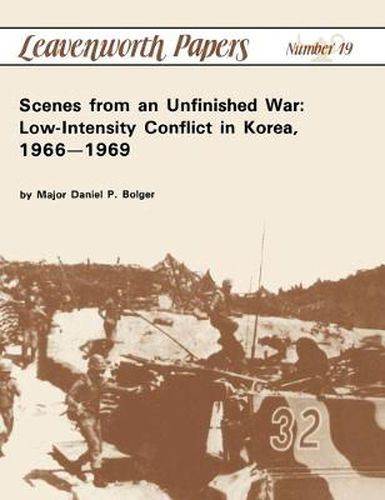Readings Newsletter
Become a Readings Member to make your shopping experience even easier.
Sign in or sign up for free!
You’re not far away from qualifying for FREE standard shipping within Australia
You’ve qualified for FREE standard shipping within Australia
The cart is loading…






This title is printed to order. This book may have been self-published. If so, we cannot guarantee the quality of the content. In the main most books will have gone through the editing process however some may not. We therefore suggest that you be aware of this before ordering this book. If in doubt check either the author or publisher’s details as we are unable to accept any returns unless they are faulty. Please contact us if you have any questions.
Low-intensity conflict (LIC) often has been viewed as the wrong kind of warfare for the American military, dating back to the war in Vietnam and extending to the present conflicts in Iraq and Afghanistan. From the American perspective, LIC occurs when the U.S. military must seek limited aims with a relatively modest number of available regular forces, as opposed to the larger commitments that bring into play the full panoply of advanced technology and massive commitments of troops. Yet despite the conventional view, U.S. forces have achieved success in LIC, albeit under the radar and with credit largely assigned to allied forces, in a number of counterguerrilla wars in the 1960s. Scenes from an Unfinished War: Low-Intensity Conflict in Korea, 1966-1969 focuses on what the author calls the Second Korean conflict, which flared up in November 1966 and sputtered to an ill-defined halt more than three years later. During that time, North Korean special operations teams had challenged the U.S. and its South Korean allies in every category of low-intensity conflict - small-scale skirmishes along the Demilitarized Zone between the two Koreas, spectacular terrorist strikes, attempts to foment a viable insurgency in the South, and even the seizure of the USS Pueblo - and failed. This book offers a case study in how an operational-level commander, General Charles H. Bonesteel III, met the challenge of LIC. He and his Korean subordinates crafted a series of shrewd, pragmatic measures that defanged North Korea’s aggressive campaign. According to the convincing argument made by Scenes from an Unfinished War, because the U.S. successfully fought the wrong kind of war, it likely blocked another kind of wrong war - a land war in Asia. The Second Korean Conflict serves as a corrective to assumptions about the American military’s abilities to formulate and execute a winning counterinsurgency strategy. Originally published in 1991. 180 pages. maps. ill.
$9.00 standard shipping within Australia
FREE standard shipping within Australia for orders over $100.00
Express & International shipping calculated at checkout
Stock availability can be subject to change without notice. We recommend calling the shop or contacting our online team to check availability of low stock items. Please see our Shopping Online page for more details.
This title is printed to order. This book may have been self-published. If so, we cannot guarantee the quality of the content. In the main most books will have gone through the editing process however some may not. We therefore suggest that you be aware of this before ordering this book. If in doubt check either the author or publisher’s details as we are unable to accept any returns unless they are faulty. Please contact us if you have any questions.
Low-intensity conflict (LIC) often has been viewed as the wrong kind of warfare for the American military, dating back to the war in Vietnam and extending to the present conflicts in Iraq and Afghanistan. From the American perspective, LIC occurs when the U.S. military must seek limited aims with a relatively modest number of available regular forces, as opposed to the larger commitments that bring into play the full panoply of advanced technology and massive commitments of troops. Yet despite the conventional view, U.S. forces have achieved success in LIC, albeit under the radar and with credit largely assigned to allied forces, in a number of counterguerrilla wars in the 1960s. Scenes from an Unfinished War: Low-Intensity Conflict in Korea, 1966-1969 focuses on what the author calls the Second Korean conflict, which flared up in November 1966 and sputtered to an ill-defined halt more than three years later. During that time, North Korean special operations teams had challenged the U.S. and its South Korean allies in every category of low-intensity conflict - small-scale skirmishes along the Demilitarized Zone between the two Koreas, spectacular terrorist strikes, attempts to foment a viable insurgency in the South, and even the seizure of the USS Pueblo - and failed. This book offers a case study in how an operational-level commander, General Charles H. Bonesteel III, met the challenge of LIC. He and his Korean subordinates crafted a series of shrewd, pragmatic measures that defanged North Korea’s aggressive campaign. According to the convincing argument made by Scenes from an Unfinished War, because the U.S. successfully fought the wrong kind of war, it likely blocked another kind of wrong war - a land war in Asia. The Second Korean Conflict serves as a corrective to assumptions about the American military’s abilities to formulate and execute a winning counterinsurgency strategy. Originally published in 1991. 180 pages. maps. ill.